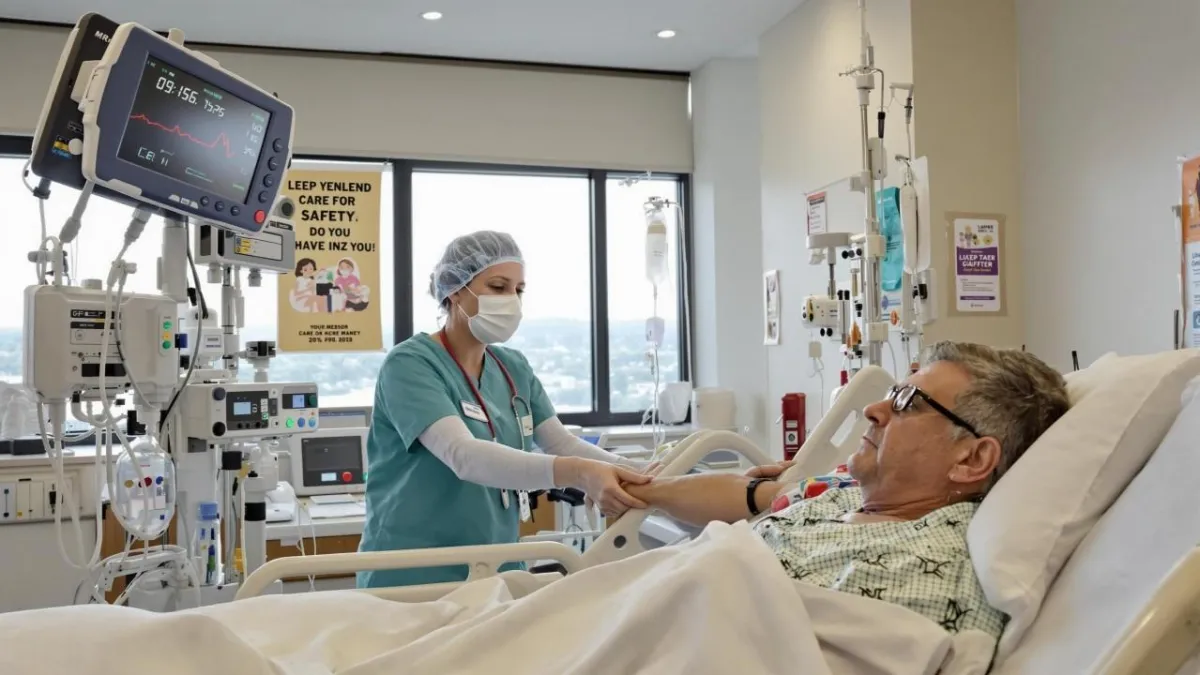Mastering Clinical Reasoning and Clinical Judgement
Date published: May 1, 2025

Clinical reasoning and clinical judgement are at the heart of nursing practice, shaping every decision from patient assessment to intervention. In today’s complex healthcare environment, the ability of nurses to recognize subtle changes in patient conditions and act decisively can mean the difference between recovery and preventable harm. One of the most critical consequences of lapses in clinical reasoning and judgement is “failure to rescue”—the inability to prevent a clinically significant deterioration, such as cardiac arrest or sepsis, after a complication arises. This issue underscores the urgent need for nurses and healthcare organizations to prioritize the development and support of these essential skills.
This article explores the causes of errors in nursing clinical reasoning and judgement, their impact on failure to rescue, and actionable strategies to strengthen nursing practice and patient safety.
The Scope and Impact of Clinical Reasoning & Judgement Errors in Nursing
Errors in clinical reasoning and judgement are preventable events that may lead to missed or delayed recognition of patient deterioration. In nursing, these errors can result from cognitive overload, communication breakdowns, or insufficient experience, and are a leading contributor to failure to rescue. The consequences are profound, affecting patient survival, family trust, and the reputation of healthcare organizations.
Key Statistics:
Studies in the Journal of Nursing Care Quality report that failure to rescue is a key indicator of hospital quality and is closely linked to nursing surveillance and timely intervention.
The American Nurses Association (ANA) highlights that inadequate clinical reasoning is a significant factor in adverse patient outcomes, including preventable deaths.
The World Health Organization (WHO) emphasizes that strengthening nursing judgement and early warning systems can dramatically reduce failure to rescue rates and improve patient outcomes.
These findings highlight the urgent need for systemic changes to support nursing clinical reasoning and judgement, especially in high-risk settings.
Common Causes of Clinical Reasoning & Judgement Errors Leading to Failure to Rescue
Understanding the root causes of errors in nursing clinical reasoning and judgement is essential for developing effective prevention strategies. Some of the most common causes include communication breakdowns during handoffs or shift changes, inadequate training in recognizing early warning signs, high patient-to-nurse ratios that limit surveillance, cognitive overload from multitasking and fatigue, and lack of standardized assessment tools or protocols.
Strategies to Prevent Failure to Rescue Through Enhanced Nursing Judgement
Preventing failure to rescue requires a multifaceted approach that empowers nurses, supports teamwork, and strengthens systems. Here are some key strategies:
Implementing Technology Solutions
Electronic Health Records (EHRs) and Early Warning Systems can help nurses track vital signs and trends, alerting them to subtle changes that may indicate deterioration. Clinical Decision Support Systems (CDSS) provide evidence-based prompts and reminders, supporting timely interventions. Secure communication platforms ensure that critical information is shared quickly and accurately among care teams.
Standardizing Assessment and Response
Developing standardized protocols for patient assessment, such as the use of early warning scores, helps nurses identify at-risk patients consistently. Clear guidelines for escalation of care ensure that concerns are communicated and acted upon without delay.
Enhancing Communication
Open communication among nursing teams and with other healthcare providers is essential for early recognition and response. Tools like SBAR (Situation, Background, Assessment, Recommendation) improve the clarity and accuracy of information exchange, especially during handoffs and emergencies.
Educating and Empowering Nurses
Regular training in clinical reasoning, simulation exercises, and case reviews help nurses sharpen their judgement and learn from real-world scenarios. Providing feedback and mentorship supports ongoing professional development and confidence in decision-making.
Fostering a Culture of Safety
Healthcare organizations should promote a non-punitive culture where nurses feel comfortable reporting near misses and concerns. Leadership must prioritize patient safety by investing in staff education, adequate staffing, and supportive technologies.
Conclusion
Failure to rescue is a preventable cause of patient harm that demands immediate attention from nurses, healthcare leaders, and policymakers. By strengthening clinical reasoning and judgement, standardizing assessment and communication, and fostering a culture of safety, we can empower nurses to act swiftly and effectively, saving lives and improving patient outcomes.
As nurses, we have a shared responsibility to ensure that every patient receives vigilant, informed, and compassionate care. By working together, we can reduce failure to rescue events and build a safer, more responsive healthcare system.
Visit our website https://drjuliesiemers.com/lifebeat-solutions/ and book a consultation with us. For inquiries, you can also reach out via email at [email protected].
#PatientSafety #NursingJudgement #ClinicalReasoning #FailureToRescue #HealthcareQuality
Mastering Clinical Reasoning and Clinical Judgement
Date published: May 1, 2025

Clinical reasoning and clinical judgement are at the heart of nursing practice, shaping every decision from patient assessment to intervention. In today’s complex healthcare environment, the ability of nurses to recognize subtle changes in patient conditions and act decisively can mean the difference between recovery and preventable harm. One of the most critical consequences of lapses in clinical reasoning and judgement is “failure to rescue”—the inability to prevent a clinically significant deterioration, such as cardiac arrest or sepsis, after a complication arises. This issue underscores the urgent need for nurses and healthcare organizations to prioritize the development and support of these essential skills.
This article explores the causes of errors in nursing clinical reasoning and judgement, their impact on failure to rescue, and actionable strategies to strengthen nursing practice and patient safety.
The Scope and Impact of Clinical Reasoning & Judgement Errors in Nursing
Errors in clinical reasoning and judgement are preventable events that may lead to missed or delayed recognition of patient deterioration. In nursing, these errors can result from cognitive overload, communication breakdowns, or insufficient experience, and are a leading contributor to failure to rescue. The consequences are profound, affecting patient survival, family trust, and the reputation of healthcare organizations.
Key Statistics:
Studies in the Journal of Nursing Care Quality report that failure to rescue is a key indicator of hospital quality and is closely linked to nursing surveillance and timely intervention.
The American Nurses Association (ANA) highlights that inadequate clinical reasoning is a significant factor in adverse patient outcomes, including preventable deaths.
The World Health Organization (WHO) emphasizes that strengthening nursing judgement and early warning systems can dramatically reduce failure to rescue rates and improve patient outcomes.
These findings highlight the urgent need for systemic changes to support nursing clinical reasoning and judgement, especially in high-risk settings.
Common Causes of Clinical Reasoning & Judgement Errors Leading to Failure to Rescue
Understanding the root causes of errors in nursing clinical reasoning and judgement is essential for developing effective prevention strategies. Some of the most common causes include communication breakdowns during handoffs or shift changes, inadequate training in recognizing early warning signs, high patient-to-nurse ratios that limit surveillance, cognitive overload from multitasking and fatigue, and lack of standardized assessment tools or protocols.
Monitoring and Reporting
Collecting and analyzing data on safety incidents to identify trends and areas for improvement.
Establishing Standards
Developing and enforcing safety protocols to ensure consistency and quality across healthcare organizations.
Promoting Education
Providing training and resources to healthcare professionals to enhance their knowledge and skills in patient safety.
Encouraging Transparency
Creating a culture where healthcare workers feel empowered to report errors and near-misses without fear of retribution.

Driving Innovation
Leveraging technology and research to implement cutting-edge solutions for patient safety challenges.

Strategies to Prevent Failure to Rescue Through Enhanced Nursing Judgement
Preventing failure to rescue requires a multifaceted approach that empowers nurses, supports teamwork, and strengthens systems. Here are some key strategies:
Implementing Technology Solutions
Electronic Health Records (EHRs) and Early Warning Systems can help nurses track vital signs and trends, alerting them to subtle changes that may indicate deterioration. Clinical Decision Support Systems (CDSS) provide evidence-based prompts and reminders, supporting timely interventions. Secure communication platforms ensure that critical information is shared quickly and accurately among care teams.
Standardizing Assessment and Response
Developing standardized protocols for patient assessment, such as the use of early warning scores, helps nurses identify at-risk patients consistently. Clear guidelines for escalation of care ensure that concerns are communicated and acted upon without delay.
Enhancing Communication
Open communication among nursing teams and with other healthcare providers is essential for early recognition and response. Tools like SBAR (Situation, Background, Assessment, Recommendation) improve the clarity and accuracy of information exchange, especially during handoffs and emergencies.
Educating and Empowering Nurses
Regular training in clinical reasoning, simulation exercises, and case reviews help nurses sharpen their judgement and learn from real-world scenarios. Providing feedback and mentorship supports ongoing professional development and confidence in decision-making.
Fostering a Culture of Safety
Healthcare organizations should promote a non-punitive culture where nurses feel comfortable reporting near misses and concerns. Leadership must prioritize patient safety by investing in staff education, adequate staffing, and supportive technologies.
Conclusion
Failure to rescue is a preventable cause of patient harm that demands immediate attention from nurses, healthcare leaders, and policymakers. By strengthening clinical reasoning and judgement, standardizing assessment and communication, and fostering a culture of safety, we can empower nurses to act swiftly and effectively, saving lives and improving patient outcomes.
As nurses, we have a shared responsibility to ensure that every patient receives vigilant, informed, and compassionate care. By working together, we can reduce failure to rescue events and build a safer, more responsive healthcare system.
Visit our website https://drjuliesiemers.com/lifebeat-solutions/ and book a consultation with us. For inquiries, you can also reach out via email at [email protected].
#PatientSafety #NursingJudgement #ClinicalReasoning #FailureToRescue #HealthcareQuality
